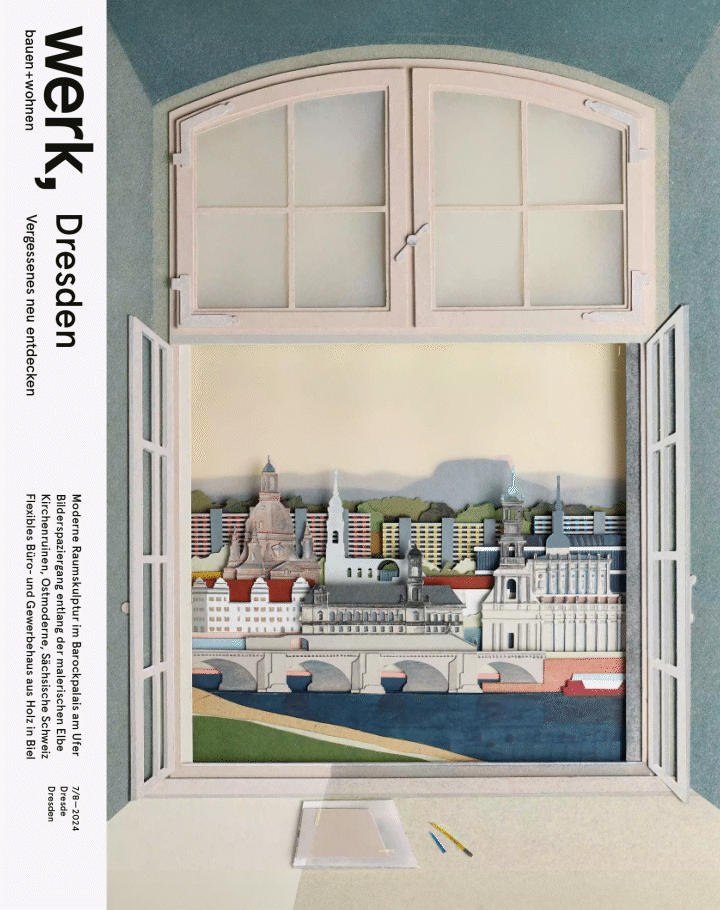werk, bauen + wohnen 7/8 – 2024

Journey into the Romantic era
The Year of Romanticism 2024 began last August: not in Dresden but in Winterthur. That was where the commemorations of the 250th anniversary of Caspar David Friedrich’s birth began. The icons were exhibited in the Kunstmuseum there before they will be shown in Dresden from 24 August 2024. Consequently, in Dresden two exhibitions are devoted to him, one in the Albertinum, the other in the Kupferstich-Kabinett. Friedrich produced important paintings for more than forty years in the city on the Elbe. Reason enough to travel there, also for the editorial team for this issue, Christoph Ramisch grew up in Naumburg an der Saale and Roland Züger, who is Swiss, lived in Dresden for six years.
A further reason is provided by the recent opening of a new museum. The art of Egidio Marzona’s collection is now housed in the Blockhaus, which has been redesigned by Nieto Sobejano. It stands directly on the Elbe, op-posite Dresden’s Royal Palace. Numerous artists have immortalised the view across the water, reflecting the city’s characteristic silhouette in the river. Today Dresden is still embedded in the loops of the river, with two completely different riverbanks: in the north characterised by wide meadows and in the south by the stone-built urban edge. In the tradition of the painters Dresden artist Susanne Keichel has made photographic portraits of selected locations in the city. And architect Hartmut Göhler, born in Dresden but living in Basel, has com-mented on these images. He was visiting curator for this issue, and we are grateful to him for several references.
Throughout this issue readers are accompanied by views of Dresden that look beyond the river. The Baroque magnificence of Dresden, which rose to the status of an art metropolis known as Florence on the Elbe, was particularly exuberant, making the loss of these treasures through the bombing of the city in the night of 13 February 1945 even more desperately saddening. Ruins and reconstruction are deeply anchored in the city and its identity. It is therefore not by chance that there are hardly any new buildings to be found in this issue. Further upstream, thanks to a considerable amount of maintenance work it has proved possible to prevent even the flat-topped mountains from crumbling. Therefore in an issue devoted to Dresden an excursion to Saxon Switzerland is a must. After all, who invented the term? Exactly: an artist from St. Gallen and one from Winterthur. — Roland Züger, Christoph Ramisch
order your copy here: www.wbw.ch